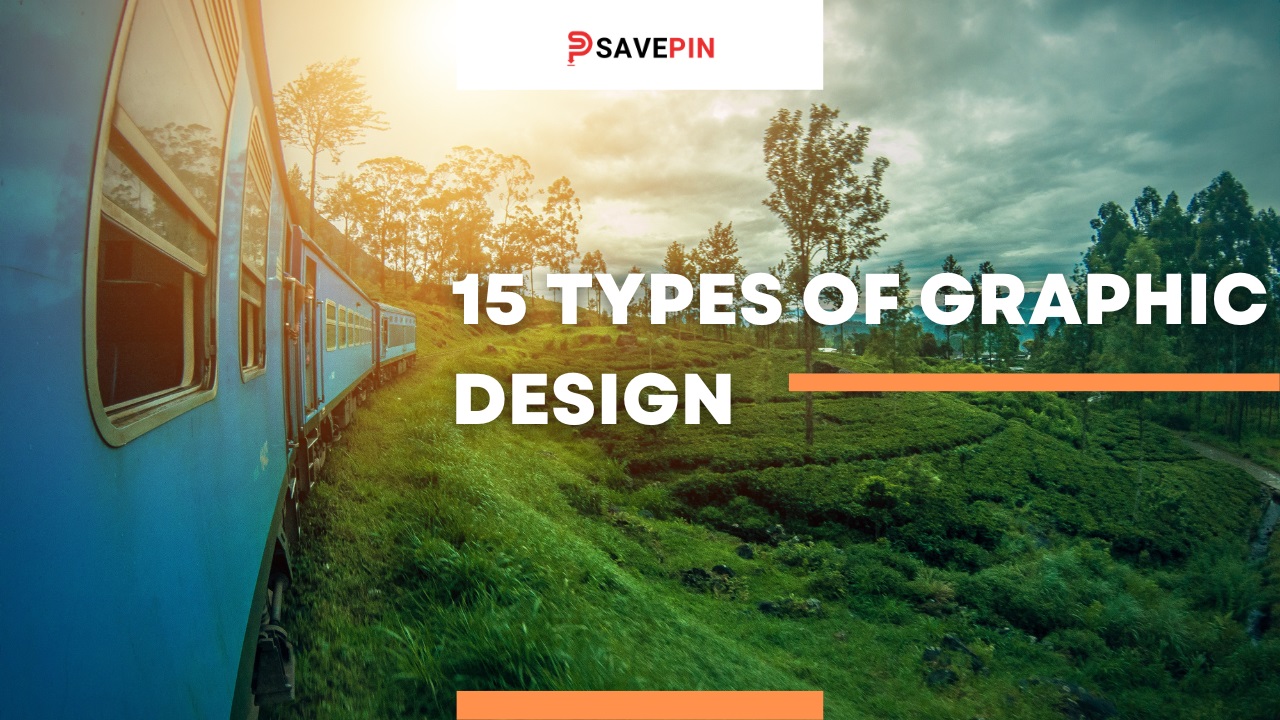Graphic design is a versatile and dynamic field that plays a crucial role in today’s visual-oriented world. From advertising to branding, web design to print media, graphic design encompasses a wide array of specialized areas. In this article, we will delve into the 15 major types of graphic design, each with its unique purpose and creative aspects.
15 Types of Graphic Design
- Logo Design
- Logo designers craft memorable symbols that represent a brand’s identity. Logos should be simple, versatile, and instantly recognizable.
- Print Design
- Print designers work on materials such as brochures, flyers, posters, and business cards. Their goal is to create visually appealing, informative, and cohesive printed materials.
- Web Design
- Web designers focus on creating user-friendly and aesthetically pleasing websites. This involves layout design, user interface design, and a deep understanding of user experience.
- UI/UX Design
- User Interface (UI) and User Experience (UX) designers concentrate on making digital products, websites, and applications user-friendly and visually engaging. They aim to optimize the overall user journey and interaction with the product.
- Illustration
- Illustrators use their artistic skills to create original artwork and visuals. They are often hired for book covers, editorial content, and product design.
- Packaging Design
- Packaging designers aim to create packaging that not only protects products but also attracts consumers’ attention on the shelf. They consider both form and function in their designs.
- Typography
- Typography designers focus on the art and science of fonts and text. They ensure that written content is not only readable but also visually appealing.
- Branding and Identity Design
- These designers are responsible for crafting a brand’s visual identity, including logos, color schemes, and brand guidelines. The goal is to establish a consistent and memorable brand image.
- Motion Graphics
- Motion graphic designers create animated content, including videos, commercials, and visual effects. Their work can be found in TV, film, and digital marketing.
- Environmental Design
- Environmental designers work on large-scale projects such as interior and exterior design for buildings, public spaces, and exhibitions. They focus on creating a cohesive visual experience within a physical environment.
- Infographic Design
- Infographic designers use visual elements to simplify complex data and convey information in a clear, engaging manner. This type of design is often used in educational materials and data-driven reports.
- Advertising Design
- Advertising designers create visuals for marketing campaigns, including banners, billboards, and digital advertisements. Their work is aimed at capturing the audience’s attention and delivering a compelling message.
- User Interface (UI) Design
- UI designers focus on the visual elements of a digital interface, such as buttons, icons, and layout. They work closely with UX designers to create an attractive and functional user experience.
- Textile and Pattern Design
- Textile and pattern designers create repetitive designs and motifs for fabrics, wallpapers, and various decorative products. Their work contributes to the aesthetics of clothing, home decor, and more.
- Signage Design
- Signage designers create visual elements for signs used in navigation, wayfinding, and information communication. These designs are crucial in public spaces, including airports, malls, and transportation hubs.
Conclusion
Graphic design is a multifaceted field that encompasses a wide range of specialties. Each type of graphic design serves a unique purpose, from creating memorable logos to designing user-friendly websites and crafting compelling advertising campaigns. Graphic designers play a vital role in our visual culture, helping convey messages and information in a visually appealing and effective manner. The diversity of graphic design types ensures that there is a niche for every creative mind in this dynamic and ever-evolving field.
FAQ
What is the primary difference between web design and UI/UX design in graphic design?
Web design primarily focuses on the visual and layout aspects of websites, while UI/UX design concentrates on creating a user-friendly and efficient digital user experience. UI/UX designers work on the functionality and interaction of a website or application, ensuring that it’s intuitive for users.
How can I choose the right type of graphic design for my project or business?
The choice of graphic design type depends on your specific goals. For branding, a logo and identity design is essential. For a digital presence, web design and UI/UX design are crucial. For printed materials, consider print or packaging design. The right choice should align with your objectives and target audience.
What software and tools are commonly used by graphic designers?
Graphic designers often use a variety of software, such as Adobe Creative Suite (including Photoshop, Illustrator, and InDesign), Sketch, Figma, and CorelDRAW. Additionally, they may use tools like Wacom tablets, color swatch books, and 3D modeling software for specific projects.
What skills are essential for becoming a successful graphic designer?
Successful graphic designers should have strong visual and artistic skills, a deep understanding of design principles, creativity, attention to detail, and good communication skills. They also need proficiency in graphic design software and a knack for staying updated with industry trends.
Can one graphic designer handle multiple types of design projects, or is it better to specialize in one area?
Graphic designers often have the flexibility to work on various types of design projects. However, some designers choose to specialize in a specific niche to become experts in that area. The choice to generalize or specialize depends on your interests, career goals, and the demand for your chosen niche in the industry.


